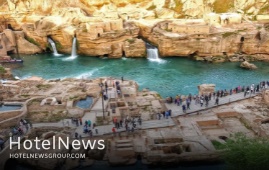
The UNESCO-registered Shushtar Historical Hydraulic System has been closed to visitors amid safety concerns after its western side was announced to be “unstable”. “Shushtar Historical Hydraulic System was closed to the public until further notice due to the unstable conditions of the western wall,” Mehr reported on Sunday. “Cultural heritage experts have warned for years about the instability of this part of the World Heritage,” the report said. Earlier in October, a local official announced that leakage of the site, which is known globally as a masterpiece of creative genius, is an immediate concern and needs to be restored. “To prevent water leakage in the historical structure, which could result in its destruction, short-term measures are taken,” the official said, Mehr reported. Studies and research are being conducted and meetings with consulting engineers are underway to find a way to cause the least damage to this ensemble, the official added. The ancient hydraulic system comprises bridges, weirs, tunnels, canals, and a series of ancient watermills powered by human-made waterfalls. It is named after an ancient city of the same name with its history dating back to the time of Darius the Great, the Achaemenid king. Inscribed on the UNESCO World Heritage list in 2009, the Shushtar Historical Hydraulic System may testify to the heritage and the synthesis of earlier Elamite and Mesopotamian knowhow. According to UNESCO, the ensemble was probably influenced by the Petra dam and tunnel and by Roman civil engineering. The property is as rich in its diversity of civil engineering structures and its constructions as in the diversity of its uses (urban water supply, mills, irrigation, river transport, and defensive system). The Shushtar Historical Hydraulic System testifies to the heritage and the synthesis of earlier Elamite and Mesopotamian knowhow; it was probably influenced by the Petra dam and tunnel and by Roman civil engineering. “The hydraulic system has been considered a Wonder of the World not only by the Persians but also by the Arab-Muslims at the peak of their civilization,” according to the UN cultural body. Furthermore, one of its main canals is a veritable artificial watercourse that made possible the construction of a new town and the irrigation of a vast plain, at the time semi-desert. UNESCO says that the Shushtar Historical Hydraulic System demonstrates outstanding universal value as in its present form, it dates from the 3rd century CE, probably on older bases from the 5th century BC. It is complete, with numerous functions, and large-scale, making it exceptional.
Create: Nov 15, 2021 Edit: Nov 15, 2021 Regional News
The Federal Communications Commission has authorized a satellite internet project from Boeing first proposed in 2017. Boeing can now move forward with building, launching, and operating its own broadband internet network from space, joining its main aerospace competitor SpaceX. Boeing’s plan involves placing 132 satellites into low Earth orbit at an altitude of 1,056 kilometers (about 656 miles). Another 15 will be launched to “non geostationary orbit” at an altitude between 27,355 and 44,221 km (16,998 to 27,478 miles). The company says it wants to use the satellites to offer “broadband internet and communications services to residential consumers, government and business users in the United States, Puerto Rico and the US Virgin Islands” while the network gets built out, and on a global basis once it’s complete. All 147 satellites would broadcast in the V-band, a higher-frequency slice of the wireless spectrum than the Ka and Ku bands used by SpaceX’s Starlink network or Amazon’s yet-to-be-deployed Project Kuiper satellites. Using V-band could allow for faster data transfer rates but runs a greater risk of interference because the higher frequencies have more trouble penetrating solid objects. (SpaceX has plans to use the V-band in some future satellites, and so does OneWeb. The Ka and Ku bands are also used by satellites that provide in-flight internet on commercial airlines.) SPACEX HAD TOLD THE FCC IT WAS CONCERNED BOEING’S NETWORK WOULD CROWD LOW EARTH ORBIT SpaceX has previously expressed concern that Boeing’s proposal to launch into already-crowded low orbits could increase the risk of a collision with other satellites. In 2019, SpaceX said to the FCC that it believed Boeing’s network would create a “clear danger of harmful interference,” according to Reuters. SpaceX’s Starlink satellites orbit the Earth at an altitude of around 550 km (roughly 342 miles), which is around where OneWeb’s internet satellite constellation can be found (and where Amazon’s satellites will go once they launch). SpaceX and OneWeb narrowly avoided a collision earlier this year. Boeing now has six years to launch half of its satellite constellation and nine years to deploy the entire network. The company had asked the FCC to loosen those requirements — it wanted to only commit to launching five satellites in the first six years, and asked for a 12-year window to launch the entire constellation — but the commission denied that request, according to the order published Wednesday. By comparison, SpaceX and Amazon have far grander plans for their networks, with each consisting of thousands of satellites. Boeing is a major satellite manufacturer, and so it spent the years before and after its initial 2017 proposal selling to early space-based internet providers as the market matured. But providers are now expected to collectively generate more than $50 billion by 2031, which could explain why Boeing bothered slogging through four years of the approval process.
Create: Nov 5, 2021 Edit: Nov 5, 2021 International News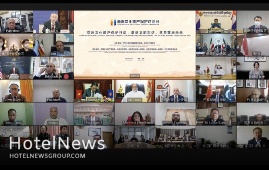
The Islamic Republic of Iran is prepared to offer expertise for the conservation of historical monuments and relics in Asia. On Thursday, Hadi Ahmadi-Roueeni, a senior official with the Ministry of Cultural Heritage, Tourism and Handicrafts announced the country’s readiness to share experience for the preservation of historical monuments with Asian countries, Iran Press reported. Establishing a fund to protect endangered cultural heritage in Asia and border-free associations of professionals in Asia as well as sharing experiences among the continental expert community would improve the conservation of the legacies, the official explained. He also called on all countries to join hands in various realms of political, academic, and professional levels to help restore the endangered historical legacies in countries suffering such problems as war, unrest, and occupation. Ahmadi-Roueeni made the remarks on Thursday on the second day of the first forum of “Asian Dialogue for Cultural Heritage Conservation” which was virtually held in China. The biggest Asian cultural heritage event is hosted by China on October 27 and 28 with the slogan of “Promoting Dialogue among Civilizations and Shaping the Future of the Asian”. According to organizers, the dialogue aims to move forward with the Asian Initiative for Cultural Heritage Conservation and open a new chapter for exchanges and mutual learning among Asian civilizations. Senior officials from 36 Asian countries and five international organizations including UNESCO, the International Council of Museums, and the International Council on Monuments and Sites participated in the conference in the form of an online meeting, Global Times reported. At the conference, the Asian Alliance for Cultural Heritage Conservation was jointly initiated by 10 Asian countries – China, Iran, Armenia, Cambodia, the Democratic People's Republic of Korea, Kyrgyzstan, Pakistan, Syria, the United Arab Emirates, and Yemen – was officially established. According to data from the UNESCO World Heritage Center, about 50 percent of the world’s endangered world cultural heritage sites are located in Asia. “Preserving our heritage is not a luxury – it is a prerequisite for ensuring that future generations can inherit an identity, a history, a voice, and a sense of ownership of their past and future,” said Xing Qu, deputy director-general of UNESCO. Xing expressed thanks to China for organizing the event and for helping to address the challenges facing cultural heritage. The ceremony also set up the Asian Fund for Cultural Heritage Conservation as a special fund to support programs and projects in conservation, research, and joint archaeology concerning cultural heritage conservation in Asia.
Create: Oct 31, 2021 Edit: Oct 31, 2021 Regional News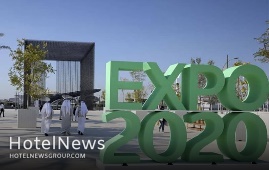
A selection of craftspeople, travel insiders, and exhibitors from Sistan-Baluchestan are getting prepared to promote the southeastern Iranian province at the Expo 2020 Dubai, which is currently underway in the UAE. "[A selection of exhibitors from] Sistan-Baluchestan province will be attending the expo in Dubai, in [the month of] Bahman to present a variety of programs," the provincial tourism chief Alireza Jalalzaei said on Tuesday. A wide range of Sistan-Baluchestan's ancient handicrafts, live performances, and workshops, and introductions to cultural and natural destinations, and the archaeological sites is expected to take the center stage at the Iran pavilion during the event, the official explained. Visitors to the pavilion are offered to discover epitomes of the ancient land in terms of rituals, handicrafts, cultural heritage, and travel destinations. It also reveals more about medical tourism, novel startups, and off-the-beaten tracks. Many countries and companies are also looking to the expo - the first major global event open to visitors since the coronavirus pandemic - to boost trade and investment. According to organizers, the Expo, an exhibition of culture, technology, and architecture under the banner “Connecting Minds and Creating the Future”, is expected to be a demonstration of ingenuity, and a place where global challenges such as climate change, conflict, and economic growth can be addressed together. Iran expects to reap a bonanza from its numerous tourist spots such as bazaars, museums, mosques, bridges, bathhouses, madrasas, mausoleums, churches, towers, and mansions, of which 26 are inscribed on the UNESCO World Heritage list. The collective province -- Sistan in the north and Baluchestan in the south -- accounts for one of the driest regions of Iran with a slight increase in rainfall from east to west, and an obvious rise in humidity in the coastal regions. In ancient times, the region was a crossword of the Indus Valley and the Babylonian civilizations. The province possesses special significance because of being located in a strategic and transit location, especially Chabahar which is the only ocean port in Iran and the best and easiest access route of the middle Asian countries to free waters. The vast province is home to several distinctive archaeological sites and natural attractions, including two UNESCO World Heritage sites, namely Shahr-e-Soukhteh (Burnt City) and Lut desert.
Create: Oct 31, 2021 Edit: Oct 31, 2021 Regional News
Before the pandemic, hotel brands were at a crossroads with increasingly brand agnostic consumers and ever-expanding brand portfolios. But there is evidence that the pandemic may have led to consumers’ renewed appreciation for a well-recognized brand name that assures quality and instills trust. This change in consumer behavior will impact brand management strategies in several significant ways. De-emphasizing brand-proliferation strategiesIn 2010, room demand jumped 6.5% as the industry emerged from a recession. This marked the beginning of a decade-long, demand-fueled brand proliferation that now provides over 1,000 hotel brands for travelers according to STR. Underpinning the surge in brand options are segmentation and brand portfolio strategies. Segmentation allows hoteliers to take a diverse traveler population and organize it into homogeneous groups (e.g., business, staycation) (Kotler et al., 2017). Brand portfolio refers to a “house of brands” approach which incorporates the corporate brand and any number of secondary or subsidiary brands (Muzellec & Lambkin, 2009). Both strategies contributed to the proliferation of new brands that were largely targeting the millennial segment and catering to their desires for work-life balance, authenticity and technology. When people are ready to travel again, their needs might become more homogeneous as their accommodation choices will mostly be based on cleanliness and safety. Moreover, the expectation of a slow recovery in economic activities coupled with a synchronized global recession suggest that rooms demand, which STR forecasts to drop by 51.2% this year, will not return to previous levels anytime soon, let alone grow. Taken together, segmentation to find new niche and a “house of brands” approach to capture excess demand will be less important in the hospitality brand management discussion. Emphasizing brand authenticitySince the pandemic disrupted current and future travel on an unprecedented scale, it may well have reminded consumers of the value of a brand. In fact, a recent IDC survey of over 1,500 U.S. consumers revealed that travelers will be more likely to seek out brand name and four-star or above hotels for assurance when they travel again. This represents an opportunity for hotel brands to reconnect with the public with better defined brand value that goes beyond the rooms and service offerings. One such strategy is authenticity branding. Brand authenticity (i.e., the extent to which a brand is “faithful toward itself, true to its consumers, motivated by caring and responsibility, and able to support consumers in being true to themselves,” Morhart et al., 2014, p.8) has been shown to help luxury hotel brands generate brand love as well as improve business performance (Manthiou et al., 2018). It encompasses not only the traditional hospitality value to genuinely care for others but also modern relationship and cause marketing theories (e.g., corporate social responsibility) to foster meaningful engagement with consumers and various stakeholders. The new generation of hospitality leaders need to grasp the concept of brand authenticity to rise above the current crisis and take the industry to a more sustainable, brand-driven future. Human-technology interaction theories to strengthen brand identityHoteliers had shown reluctance in adopting technology in the past, partly due to high costs, but mostly due to the lukewarm reception (e.g., low usage of loyalty app, perceived low performance of service robots) from consumers who demand a personal touch. But social distancing, online ordering, curbside pickup, and other measures implemented during the pandemic have accustomed consumers to contactless consumption. Many hoteliers (e.g., Hilton) see contactless technology, such as mobile check-in and payment, as necessary standards post-pandemic (Wroten, 2020). Using AI and robotics to further reduce interpersonal contacts will likely be the next frontier to push to gain trust from the pandemic-stricken consumers and encourage them to travel again. The Westin Houston Medical Center hotel using robots in sanitizing and disinfecting its property is a case in point. The challenge for hotel brands is to meaningfully fuse technology (AI and robotics) into a hotel brand’s identity rather than simply use them in operational procedures (e.g., cleaning) that are typically undifferentiated across properties and brands. Theories pertaining to usability, aesthetics, and emotions in human-technology interactions (Wu, Fan, & Mattila, 2015) and how these interactions transpire in favorable brand associations will shed light on this technology branding endeavour for burgeoning hospitality leaders.
Create: Oct 27, 2021 Edit: Oct 27, 2021 Hotel Management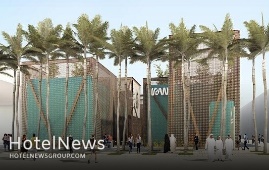
According to the Hotel News, The Association of Iranian Travel Agencies has invited domestic travel businesses to attend Iran pavilion at Expo 2020 Dubai, which is currently underway in UAE. Association of Iranian Travel Agencies Director Hormatollah Rafiei has called on [eligible] travel agencies to grasp “this golden opportunity” by attending the event in a space provided to tourism activists for free, Mehr reported on Tuesday. Visitors to the pavilion are offered to discover epitomes of the ancient land in terms of rituals, handicrafts, cultural heritage, and travel destinations. It also reveals more about medical tourism, novel startups, and off-the-beaten tracks. Many countries and companies are also looking to the expo - the first major global event open to visitors since the coronavirus pandemic - to boost trade and investment. According to organizers, the Expo, an exhibition of culture, technology, and architecture under the banner “Connecting Minds and Creating the Future”, is expected to be a demonstration of ingenuity, and a place where global challenges such as climate change, conflict, and economic growth can be addressed together. The Persian Gulf state has relaxed most coronavirus limitations but Expo requires face masks to be worn and for visitors over 18 to be vaccinated against, or test negative for, COVID-19. Iran expects to reap a bonanza from its numerous tourist spots such as bazaars, museums, mosques, bridges, bathhouses, madrasas, mausoleums, churches, towers, and mansions, of which 26 are inscribed on the UNESCO World Heritage list.
Create: Oct 20, 2021 Edit: Oct 20, 2021 Regional News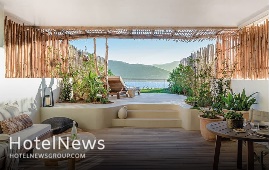
Welcome to our annual World’s Best Luxury Hotel Brands report. This is not just another World’s Best list. LTI – Luxury Travel Intelligence – has taken the past 12 months to apply the perfect assessment process: a rigorously defined algorithm that measures the performance and values of luxury hotel brands. This year, our algorithm has 131 touch points relevant to the luxury hotel sector. Each has its own weighted score value with a total maximum accumulative score of 4736. The touchpoints relate to overall brand performance, rather than the performance of individual properties. It is all about a brand’s ability to deliver: its passion, commitment, ethos and values, as well as the quality of its management and staff. Continuing investment and how well it is executed is also a major factor, particularly regarding new properties and the refurbishment of existing ones. This year’s results are reflected as percentages, with last year’s positions in brackets. 1. Six Senses 83.3% (1) 2. Mandarin Oriental 82.6% (5) 3. Auberge 81.8% (3) 4. Aman 81.4% (2) 5. Belmond 79.9% (4) 6. One&Only 77.0% (6) 7. Oetker Collection 75.7% New Entry 8. Four Seasons 74.1% (8) 9. Rosewood 73.5% (7) 10. Raffles 72.7% New Entry 11. Viceroy 72.2% New Entry 12. COMO 71.0% (10) Other brands that rated sufficiently to be monitored throughout the year are (in alphabetical order) Alila, Anantara, Banyan Tree, Dorchester Collection, Firmdale, Jumeirah, Leela, Oberoi, Park Hyatt, Peninsula, Ritz Carlton, Rocco Forte, Shangri-La, Soho House, St. Regis, Taj, The Luxury Collection. Brands that currently have less than ten properties (our minimum requirement) but rate highly when applying our algorithm are (in alphabetical order) Airelles, Althoff Collection, Bulgari, Capella, Cheval Blanc, Maybourne, Montage, Nikki Beach, Pendry, Soneva. About The World’s Best Luxury Brands ReportNo other organisation connects with the global luxury hotel industry as LTI does. Our researchers engage with everyone from CEOs of the brands we have rated to thousands of managements, staff and guests. This is all part of the process for creating our destination led reports for our members (affluent, discerning travellers) but it also allows us to utilise our findings to create this unique report. Every year the process starts again – the results from previous years have no bearing on the following year. This does inevitably lead to volatility in each year’s results (such as this year), but this is a dynamic sector and we want to reflect what is really happening out there. Six Senses: Worlds Best Luxury Hotel BrandWe continue to be very impressed with Six Senses. It has an authentic blend of wellness, sustainability, warm hospitality and crafted guested experiences. Also, its leadership is exemplary. The recent addition of Neil Palmer as Chief Operations Officer will bring boundless experience, energy and further integrity to the brand. New EntriesWe have been tracking Oetker Collection for several years while they have been building an exceptional portfolio of globally renowned hotels. We have been particularly impressed with the meticulously rebuilt of The Eden Rock in St Barths and their creation of The Woodward, a 26 room all-suite hotel on the shores of Lake Geneva, which opened in September. Raffles, with a new CEO at the helm, has been quietly creating a raft of impressive new properties across the globe. Viceroy has also shown great courage and commitment to building a global modern luxury hotel brand offering intuitive service, authentic experiences and provocative design. Covid-19 Impact Our algorithm has been suitably adjusted to accommodate the multitude of Covid- related challenges that luxury hotel operators have faced during 2020 and 2021. This also accommodates how brands are responding to a significant shift in Covid- driven demands from the luxury traveller.
Create: Oct 19, 2021 Edit: Oct 19, 2021 International News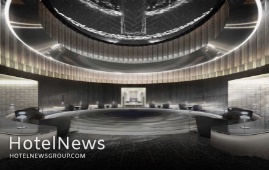
Zeitgeist, Design and Service ExcellenceDeutsche Hospitality and the Porsche Design Group are joining forces to present the Steigenberger Porsche Design Hotels brand, an innovative hotel concept in the Luxury Lifestyle Segment. Steigenberger Porsche Design Hotels will bring together design, technology and lifestyle at the very highest level. The result will be a unique brand experience created from the design philosophy and values of the exclusive Porsche Design lifestyle brand. This will be combined with the excellence and experience of Steigenberger, which boasts a representative tradition stretching back for more than 90 years. Investor interest in Steigenberger Porsche Design Hotels is considerable. The first planning stage involves the establishment of up to 15 hotels in global metropolises such as London, Singapore, Dubai and Shanghai. Design and quality are the top priority“Steigenberger Porsche Design Hotels creates a brand which marries the design philosophy and values of the exclusive Porsche Design brand with the hospitality and service quality of a Steigenberger hotel,” said Marcus Bernhardt, CEO of Steigenberger Hotels AG/Deutsche Hospitality. “Our joint goal is to establish a new hotel product for a global target group which seeks uniqueness and which has the highest aspirations regarding quality.” “Steigenberger Porsche Design Hotels will boast an unusual and exceptional spatial and lighting concept,” stated Dr. Jan Becker, CEO of Porsche Design Group. “Innovative rooms and suites will feature a singular design and interior which captures the spirit of the environment. Travellers in search of extraordinary experiences will be able to find Steigenberger Porsche Design Hotels at some of the world’s most breath-taking locations.” The hotels will offer at least 150 rooms, suites, and penthouses. They will also have a remarkable restaurant and bar concept, exclusive Meet&Greet Cubes, and a health and beauty facility and gym extending over a minimum area of 1,000 square metres. Deutsche Hospitality already maintains a presence in the Luxury, Upscale, Midscale and Economy Segments via the existing brands. “We have set ourselves the objective of achieving significant worldwide growth by 2027,” Mr. Bernhardt continued. “For us, Steigenberger Porsche Design Hotels constitutes an important step towards appealing to an attractive target group in the long term and towards meeting growing requirements for individuality, exclusivity, design and an inimitable hotel experience.” The development of Steigenberger Porsche Design Hotels is enabling Porsche Design to transfer its brand philosophy to exterior and interior architecture. This will allow design expertise to be made accessible to a broad section of the public via the vehicle of outstanding hotel projects. Jan Becker: “The brand perception factor is becoming increasingly important for customers. In hotels we convey the brand experience in a unique way, and this makes it possible to introduce additional differentiation to the market.”
Create: Oct 17, 2021 Edit: Oct 19, 2021 International News
The World Travel & Tourism Council (WTTC) says the UK’s Travel & Tourism sector’s year on year recovery may only claw back a third, whilst international travel spending continues to plummet. Latest research from WTTC, which represents the global Travel & Tourism sector, shows the recovery has been severely delayed by the lack of spending from international visitors. WTTC blames strict travel restrictions, such as the destructive ‘traffic light’ system, for wreaking havoc on the sector. Now, despite its highly successful vaccine rollout, the UK is set to record further losses in inbound visitor spending than the previous year, a year in which international travel ground to an almost complete standstill. At the current rate of recovery, WTTC research shows the UK’s Travel & Tourism sector’s contribution to the nation’s economy could rise year on year by just under a third (32%) in 2021, broadly in line with the global average of 30.7%. However, research conducted by the global tourism body shows the increase has been primarily spurred on by the recent boom in domestic travel, with domestic spending growth set to experience a year on year rise of 49% in 2021. While this surge in domestic travel has provided a much-needed boost, it will not be enough to achieve a full economic recovery and save millions of jobs still under threat. The research goes on to show that international spending is predicted to plunge by nearly 50% on 2020 figures – one of the worst years on record for the Travel & Tourism sector – making it one of the worst performing countries in the world. While other countries, such as China and the U.S., are set to see a rise in international travel spending this year, the UK lags and continues to record significant losses. Severe travel restrictions, ever-changing policies, and barriers to travel to the UK, such as the current requirement for visitors to take an expensive day two PCR test after arriving in the country, have had their toll. Last year, the UK Travel & Tourism sector saw 307,000 job losses across the country and research shows that jobs in the sector are set to remain flat this year. Julia Simpson, WTTC President & CEO said: “WTTC research shows that while the global Travel & Tourism sector is beginning to recover, the UK continues to suffer big losses due to continuing travel restrictions that are tougher than the rest of Europe. Looking ahead to 2022, WTTC research provides grounds for optimism. With the right measures and a strong focus on international travel, the UK could see Travel & Tourism’s contribution to GDP rise by 53% in 2022, resulting in an additional £66 billion to its economy. International visitor spending could also see a significant increase reaching £29 billion – just 20% below 2019 levels. Meanwhile, employment growth could see a 14% boost year on year, equating to additional 580,000 jobs in 2022, resulting in over 4.7 million jobs, which is 445,000 above 2019 levels.
Create: Oct 16, 2021 Edit: Oct 16, 2021 International News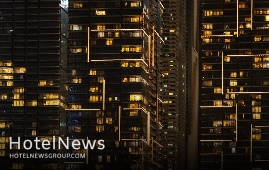
Recent weather disasters, social unrest and a heightened awareness of racial bias have prompted hoteliers to double down on their commitments to become better corporate citizens and do more to address environmental, social and governance (ESG) issues. These are moves toward a social good, sure, but also have ramifications on hotel company P&Ls. Marriott International, for one. It recently announced a commitment to reach net-zero emissions of greenhouse gases by 2050. The pledge follows the previous setting of goals by the massive global company to reduce single-use plastics, cut down on food waste by 50% and significantly amp up the diversity of suppliers, among other measures. InterContinental Hotels Group is another. Earlier this year it announced plans “to make a positive difference for our people, communities and planet over the next decade.” The company’s new commitments include a 15% “absolute reduction” of energy use and carbon emissions; a reduction of waste that will include the elimination of single-use items and a “prevent, donate, divert” plan for food waste; increased water conservation efforts; new programs to “improve the lives of 30 million people in our communities around the world” and, for employees, to “champion a diverse culture where everyone can thrive.” All of these measures benefit the public good and also have impact on a hotel’s ability to control expenses, particularly in regard to energy management. “Saving energy can—and will—impact profitability,” said Denise Naguib, VP of Sustainability and Supplier Diversity at Marriott. “For many properties, the second largest cost after labor is energy, and in some markets it actually supersedes labor, so this is a real cost that impacts the bottom line.” Energy By The Numbers Energy costs are mainly variable and there are ways to control this expense, which is of the moment now as the expense creeps back up. In U.S. hotels, the cost of electricity jumped to $4.31 in August on a per-available-room basis, compared to $3.35 in July 2020, according to HotStats data. Year-to-date August, hotels were paying $3.32 for energy, compared to $2.94 over the same period a year prior. Europe saw a similar rise, with August electricity at €6.26 compared to €8.26 in the same month last year, and €8.67 in the first eight months of this year compared to €8.26 in the same period a year ago. Small Steps, Big Rewards Operational changes large and small can help drive energy efficiency. “One of our hotels that had a high energy bill brought on an energy manager,” Naguib said. “That person found energy efficiencies and reduced the property’s energy bill by $1 million.” On a broader level, she added, properties need to empower engineers and others to find energy efficiencies, such as shutting a foyer light that’s kept on all day, deploying technology to regulate temperatures and electric usage throughout the space. Smart uses of food, such as saving the ends of vegetables for stews or making more scrambled eggs at the start of breakfast to avoid whipping up too many at the end of service, can have an impact. Energy purchasing decisions and the education of employees also can make a difference. That hands-on approach also can be used when working to make hoteliers’ purchasing choices more inclusive, Naguib said. “If any of our associates are working on RFPs or RFIs, we help them seek out diverse suppliers, such as women or minority-owned businesses. It adds more voices to the table for bidding opportunities.” Such shifts generate customer loyalty, IHG noted when it announced the company’s enhanced ESG policies.
Create: Oct 13, 2021 Edit: Oct 13, 2021 Hotel Management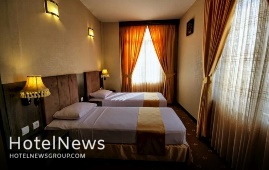
A total of 2007 beds is expected to be added to the hospitality sector of West Azarbaijan province, the provincial tourism chief has said. Currently, 41 tourism-related projects including hotels, apartment hotels, eco-lodges, and tourist complexes are underway across the northwestern province, Jalil Jabbari announced on Sunday. The province will increase its accommodation capacity by 974 rooms and 2007 beds through the opening of the mentioned ongoing projects, the official added. So far, the projects have progressed by 42 percent, he noted. Back in April, the official announced that tourism-related projects generated 1,767 job opportunities across the province during the past Iranian calendar year 1399 (ends March 21). “The largest number of jobs is related to the issuance of licenses for handicraft producers, which has led to the employment of 549 persons,” he noted. Iran considers reopening borders to foreign vacationers as its new tourism minister has said the government will soon scrap visa restrictions. Though international tourism has revealed signs of a rebound as some destinations eased travel restrictions over the past couple of months, the lack of international coordination and slow vaccination rates in several countries and regions suggest it may need a longer time to bounce back. On the one hand, according to the latest edition of the UNWTO World Tourism Barometer, an estimated 54 million tourists crossed international borders in July 2021, down 67% from the same month in 2019, but the strongest results since April 2020. This compares to an estimated 34 million international arrivals recorded in July 2020, though well below the 164 million figure recorded in 2019. On the other hand, another research conducted by Oxford Economics on behalf of the World Travel and Tourism Council (WTTC) reveals that countries’ GDP is expected to increase only by less than one-third, as tourism is recovering even slower than expected. The research was based on the current vaccination rates globally, consumer confidence, and less stringent entry and travel restrictions in the world. However, prospects for September-December 2021 remain mixed, according to the latest UNWTO Panel of Experts survey, with 53% of respondents believing the period will be worse than expected. Only 31% of experts expect the point to better results towards the end of the year. The survey also shows that most tourism professionals continue to expect a rebound driven by unleashed pent-up demand for international travel in 2022, mostly during the second and third quarters. West Azarbaijan embraces a variety of lush natural sceneries, cultural heritage sites, and museums including the UNESCO sites of Takht-e Soleyman and Qareh Klise (St. Thaddeus Monastery), Teppe Hasanlu, and the ruined Bastam Citadel. The region was home to several ancient civilizations. According to Britannica, it was conquered by Alexander the Great in the 4th century BC and was named Atropatene after one of Alexander’s generals, Atropates, who established a small kingdom there. Ultimately, the area returned to the Persian (Iranian) rule under the Sasanians in the 3rd century CE.
Create: Oct 13, 2021 Edit: Oct 13, 2021 Regional News
UNWTO and Netflix have partnered on the publication of a report which looks at the role of film and series as drivers for tourism and cultural affinity. The Global Report on Cultural Affinity and Screen Tourism explores the growing affection one has towards a particular country or culture displayed on the screen. The findings of the research were presented in Madrid against the backdrop of the Iberseries Platino Industria - the largest international event for professionals linked to the audiovisual industry in Spanish and Portuguese. The report’s ultimate goal is to support policymakers and key stakeholders within the tourism sector to implement policies that make their destinations attractive for audio-visual producers. At the same time, it aims to help in the building of focused strategies to promote tourism and consumption of local culture, investing in skills and training to develop the local film and creative sectors to ensure a high level of talent, infrastructure and production capacity and integrating tourism and showcasing culture at film festivals to deepen the global audiences’ knowledge. UNWTO Secretary General Zurab Pololikashvili says: “Both tourism and the audiovisual sectors celebrate and promote culture, support jobs and provide opportunities in diverse locations. The joint work of UNWTO and Netflix will help destinations realize the potential benefits of screen tourism. Dean Garfield, Vice-President, Public Policy, Netflix: “As highlighted in this research, we have been able to demonstrate conclusively what we instinctively already believed, which is that alongside the desire to travel and visit destinations, exposure to screen content also leads to greater interest in heritage, culture, language, and developing interpersonal relationships. This truly demonstrates that the creative industries, cultural exchange, storytelling, and tourism are all interlinked and can transform the way communities perceive and connect with each other.” Following the presentation of the Global Report, experts on tourism and the audio-visual industry shared their knowledge and insights into changing trends in screen tourism, its positive impacts on strengthening cultural affinity and the role of online streaming services in promoting tourism and cultural affinity between people, cultures and countries in line with the 2030 Agenda. The event also served to underline how public-private partnerships can support destinations to promote themselves as attractive locations for audio-visual producers.
Create: Oct 11, 2021 Edit: Oct 11, 2021 International News
